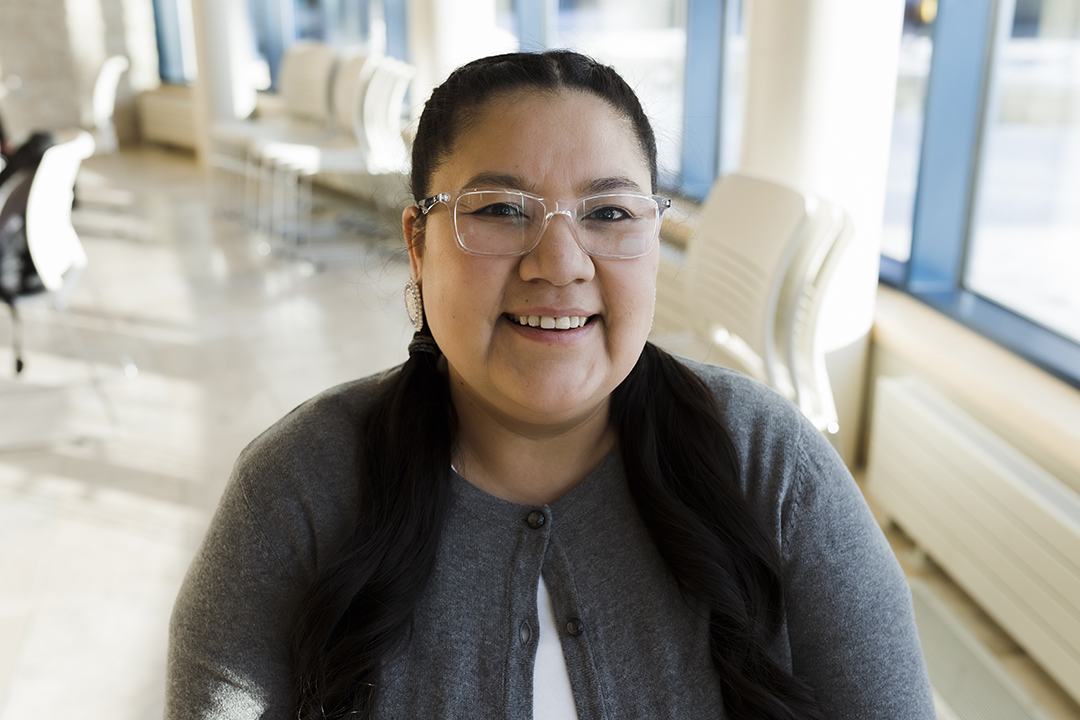
ITEP student paving the way with creative teaching methods
Incorporating Cree into Education is a necessity for Amanda Jobb.
By Ashley Sharp and John ShellingJobb is in her fourth year of the Indian Teacher Education Program (ITEP) within the College of Education. During her internship Amanda created Kokum’s Corner, a program featuring a grandmother character who speaks Cree. The program helped children learn Cree in an accessible way.
Jobb’s passion for language revitalization and her ability to develop relationships has led to her success within the schools she works. Her efforts will be recognized with an award for community engagement at this year’s Indigenous Student Achievement Awards on Feb. 6. Indigenous students from across the University of Saskatchewan (USask) will be honoured at a ceremony to recognize their academic excellence, leadership, research endeavours or community engagement.
The award ceremony is part of Indigenous Achievement Week (IAW), which celebrates the successes and contributions of Métis, First Nations and Inuit students, staff and faculty. The festivities include a public art project, speakers and celebrations in various locations across campus.
We asked Jobb a few questions about her time at USask and what motivates her.
Why did you choose the College of Education and the ITEP program?
ITEP provided me with the opportunity to educate myself alongside other indigenous students.
Why is language revitalization important to you?
Language revitalization is important because our language is our identity. There are aspects of our culture that are communicated better in our own language.
How do you develop your teaching methods?
My teaching methods are developed with interest inventories and learning to be flexible and adapting to each students needs.
What inspired you to create Kokum’s Corner?
Kokom’s Corner was inspired by my desire to give the students a safe and nurturing environment. As children, most of us remember the love and care we received when we went to visit our grandparents. This is a setting I wanted to capture in a classroom setting.
Has there been someone in your life who has inspired you to get to where you are today?
My mother is a teacher. I grew up watching how much she cares about her students. She is a passionate teacher and spent many extra hours outside of regular school hours making sure the students enjoyed their class time
This year’s Indigenous Achievement Week theme is Indigenous knowledge systems. How can Indigenous knowledge systems improve the world we live in
Indigenous knowledge systems teach the children about caring for one another. In Indigenous culture, the community looks after the wellness of each individual. In addition, the connection with nature and what nature provides, such as food, shelter, and medicine, is important to pass down to the younger generation. Teaching the students to respect and care for the environment is as imperative as respecting and caring for people. Educating the younger ones on how our ancestors valued their surroundings gives the students a part of their history.

